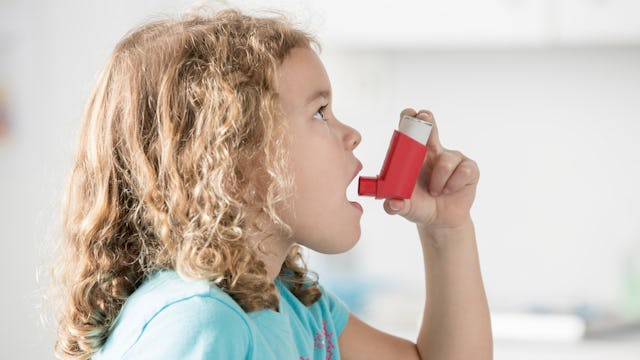Air Pollution Is The Direct Cause Of Asthma In Millions Of Kids Each Year

This means 11,000 new cases of pediatric asthma are diagnosed every day
The United States currently ranks third worst in the world when it comes to minors who inhale and suffer fumes from traffic pollution. Which, according to a new study, is a direct cause of the rise of pediatric asthma in the U.S.
Approximately 4 million children worldwide develop asthma each year because they breathe in polluted air. China had the largest burden related to air pollution and child asthma at 760,000 cases of asthma per year, followed by India at 350,000 and the U.S. at 240,000, according to the study. Pediatric asthma can cause wheezing, breathlessness, and potentially fatal attacks, and the cases are only rising. Asthma is officially the most common non-communicable disease affecting children.
Research suggests the air pollution caused by traffic can cause the airways to become inflamed, which can trigger asthma in those who are at genetic risk of developing it. The latest study focuses on the effects of nitrogen dioxide (NO2), which is the major component of traffic-related air pollution. Researchers from the George Washington University Milken Institute School of Public Health studied data collected between 2010 and 2015 on 125 cities across 194 countries.
The results of how NO2 and air pollution affects kids is staggering. The data shows that a majority of the 4 million children diagnosed with asthma each year in the U.S. are living in urban areas. Los Angeles, New York, Chicago, Las Vegas, and Milwaukee are currently ranked as the five cities with the highest percentage of kids developing asthma due to polluted air.
According to the Center for Disease Control, approximately 6 million children under the age of 18 have asthma in the United States. As of 2015, 1 in 12 children had asthma, with 47.5 percent of children with asthma reporting one or more asthma attacks in one year.
“Our findings suggest that millions of new cases of pediatric asthma could be prevented by reducing air pollution,” Prof Susan Anenberg, at George Washington University, tells The Guardian. So what can we do to reduce pollution and cases of asthma in children worldwide? Well, that’s up to the government. “Improving access to cleaner forms of transport, like electrified public transport, cycling and walking, would reduce asthma, enhance physical fitness, and cut greenhouse gas emissions.”
Childhood asthma isn’t curable. While it’s not a different type of asthma compared to adults who have it, children do face unique challenges when they have the condition. According to the Mayo Clinic, pediatric asthma is a leading cause of emergency department visits, hospitalizations and missed school days. It also causes kids to have trouble sleeping, delayed recovery from viral infections, trouble breathing that hinders exercise and outdoor play, and fatigue.
“This landmark study shows the massive global burden of asthma in children caused by traffic pollution,” said Professor Chris Griffiths from Queen Mary University of London and the co-director of the Asthma UK Centre for Applied Research, to The Guardian. “Asthma is only one of the multiple adverse effects of pollution on children’s health. Governments must act now to protect children.”